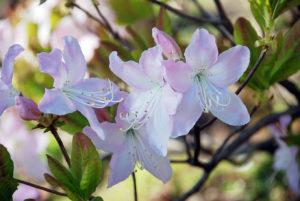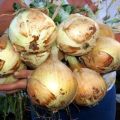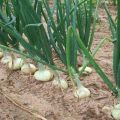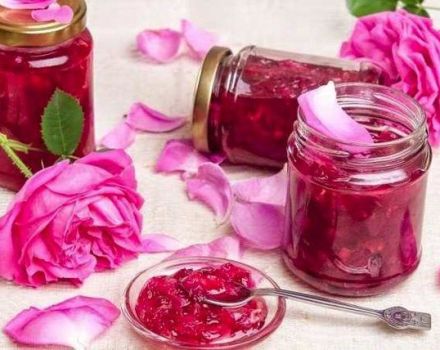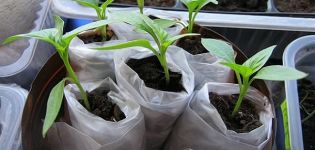Types and varieties of decorative Allium onions, planting and care in the open field
The decorative Allium bow will become the center of any flower bed or garden arrangement. Round, multi-colored inflorescences of the plant, in combination with other flowers, allow you to create unique design solutions for gardens and backyards. Allium is a completely unpretentious culture, so planting and further care for it in the open field is available even to novice flower growers and gardeners.
Description and features
The Allium plant belongs to the amaryllis family, and the closest relatives of this decorative flower are garlic and common onions. From his unusual bloodline, Allium inherited the pungent smell of onions and the bitter taste of garlic. Since the plant is unpretentious, it naturally occurs in different climatic zones.
Main characteristics:
- The herbaceous stem is thick. Some varieties grow up to 1.5-2 meters.
- Leaves are elongated, feather-shaped. As soon as the flowering phase ends, they wither.
- Inflorescences with small flowers have a spherical shape. In some varieties of ornamental onions, the caps of the inflorescences reach sizes up to 30-35 cm in diameter.
- Long flowering. The beginning of the active flowering phase occurs at the beginning of summer and ends at the end of August.
- There are late varieties of culture that do not lose their decorative properties even in autumn.
Florists and landscape designers often use different varieties of decorative bows to decorate unusual garden beds and compositions.
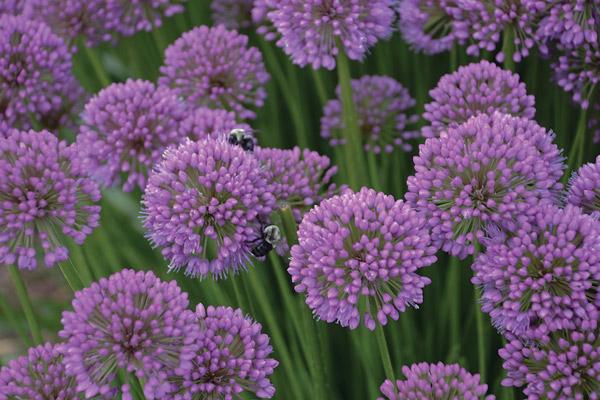
Kinds
The perennial decorative Allium onion is divided into types and varieties, which differ in size, shades of inflorescences and the difference in flowering time.
Round-headed
This type of culture is distinguished by its small size and late flowering dates. Oval-shaped inflorescences no more than 3 cm in diameter. Flowers are small, burgundy or pink, bloom in early August.
Yellow
The maximum height of a yellow decorative onion is 40 cm, the inflorescences are loose, up to 10 cm in diameter, with yellow bell-shaped flowers.

Roseum
The type of decorative culture Roseum differs from its counterparts in unusual pink flowers that look like rose trees. Plant height from 60 to 80 cm.The active flowering phase begins in June and lasts until the end of summer.
Cernuum
This type of culture is often used for culinary purposes. The plant is up to 50 cm high, the inflorescences are loose, bent downward, with white or pinkish flowers.
The flowering phase begins in July. Young leaves of the plant are used for food.
Sicilium
Tall type of Allium, grows up to 130 cm. Inflorescences are large, with large bell-shaped flowers of pink and cream shades.
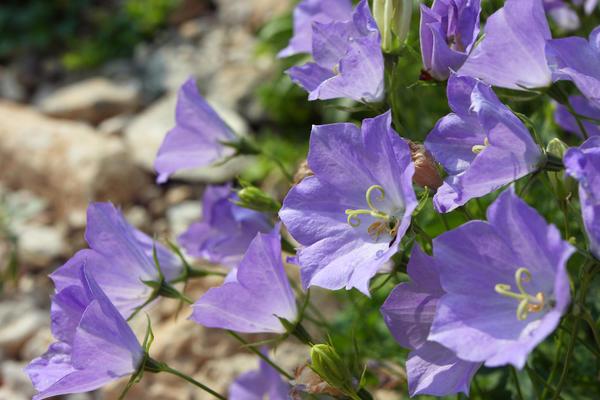
Giant
Allium Giganteum blooms in late spring. Plant height reaches 1.5-1.7 m. The inflorescences are large and dense, purple and lilac shades, up to 15 cm in diameter. The flowers are small, in the form of stars.
City-loving
A low-growing type of culture will grow to a maximum mark of 20 cm. Inflorescences are loose, with bell-shaped flowers of purple and pink shades. It enters the active flowering phase at the end of May. The flowering period is short, only 20-24 days.
Inclined
Ornamental onions are also edible. The plant came to our continent from the countries of North America. The form differs in thin long leaves. Inflorescences are loose, inclined to the ground, flowers are pink and beige. Blooms in July.
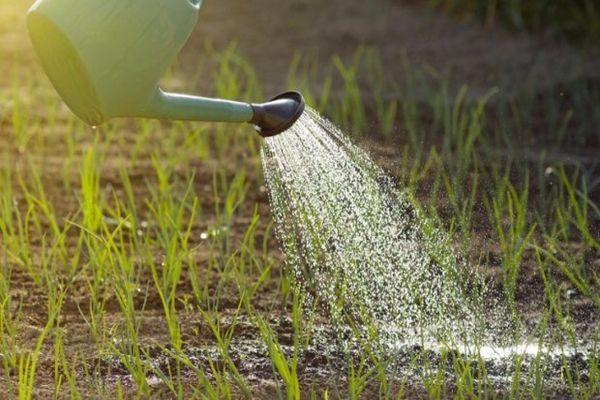
Bulgarian
Allium of this species blooms in early summer. Plant height up to 1 m, large inflorescences, with bright purple flowers.
Popular varieties
Decorative onions differ not only in types, but also in varieties that have different decorative properties.
Sicilian
Tall cultivar with large bell-shaped flowers. The plant is attractive to bees, which is why it is called honey garlic.
Blue, white
Tall peduncles with small blue or white inflorescences, with small bell-shaped flowers.
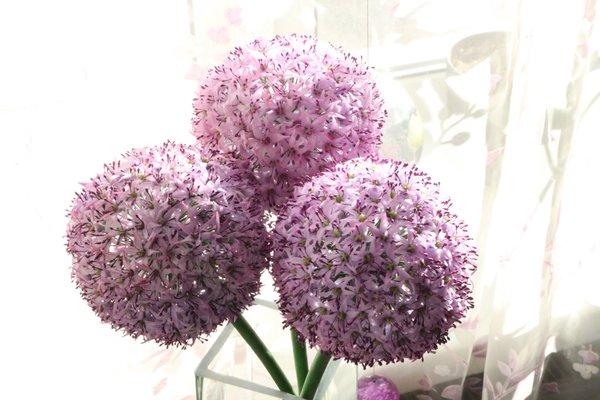
Christopher
Tall variety of ornamental onion native to Persia. Large, globular inflorescences up to 25 cm in diameter, bloom in small, star-shaped flowers. After the flowering period, the inflorescences do not crumble, but dry up on the peduncle, which allows them to be used for decoration at any time of the year.
Moths
Allium of the Moli variety is a frequent inhabitant of gardens and home gardens. The plant grows small, up to 25 cm, inflorescences are loose, with large yellow flowers in the form of stars, which bloom in late May.
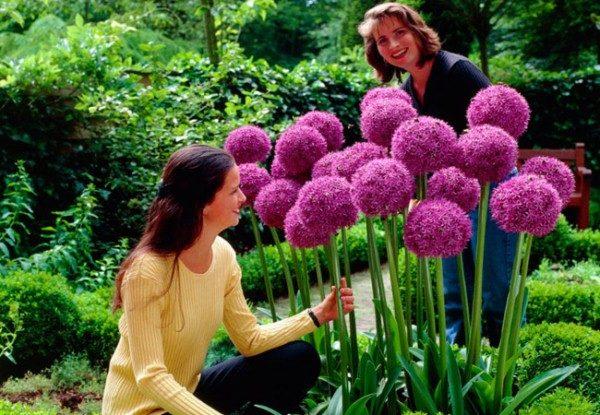
Gladiator
The Gladiator variety has not only decorative properties, but is also used for food. Plant height from 80 to 100 cm, dense purple inflorescences - up to 20 cm in diameter. Allium Gladiator is a whimsical plant to care for, therefore it requires additional attention.
Purple Sensation
Frost-resistant type of decorative onion with large, bright inflorescences. Plant height up to 1.5 m, inflorescences 12-14 cm in diameter, with small flowers in the form of stars in bright purple hues.
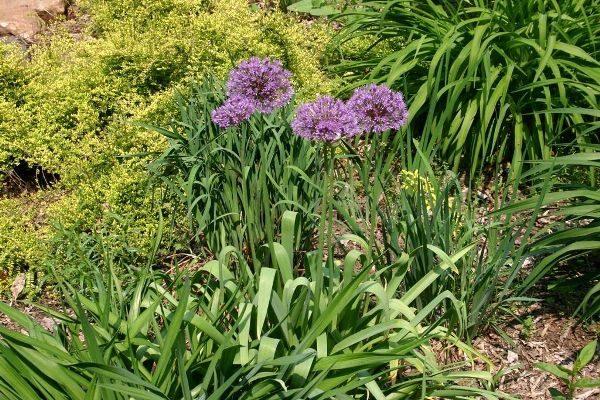
Ivory Queen
With a small growth of 30-35 cm, this variety of ornamental culture has large, up to 12 cm inflorescences. Blooms in mid-summer with white and beige flowers. The leaves are wide, elongated, and have an unusual green-blue tint.
Mount Everest
A tall variety of Allium, it grows up to 120 cm. Globular inflorescences up to 25 cm in diameter, with white, star-shaped flowers.
Eros
Spherical large inflorescences with beautiful bell-shaped flowers of lilac, purple and pink shades. Plant height up to 35 cm, inflorescence diameter 8-10 cm, active flowering phase begins in June.
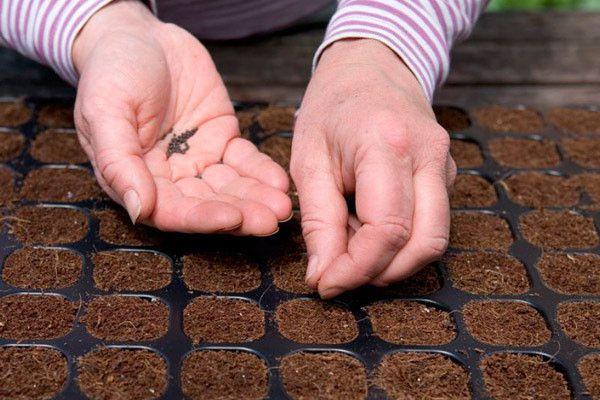
Hair
The most unusual kind of decorative onion with purple buds that resemble a disheveled hairstyle. Active flowering occurs in late spring and lasts about a month.
Goliath
Allium of the Goliath variety grows up to 100 cm. The inflorescences are large, dense up to 25 cm in diameter, the flowers are small, in the form of stars of purple and lilac shades.
Sativum
In addition to its decorative properties, the Sativum variety also has a culinary purpose, because the plant is similar in taste and structure to ordinary garlic. Small inflorescences bloom in small white flowers, which become gray as they bloom.
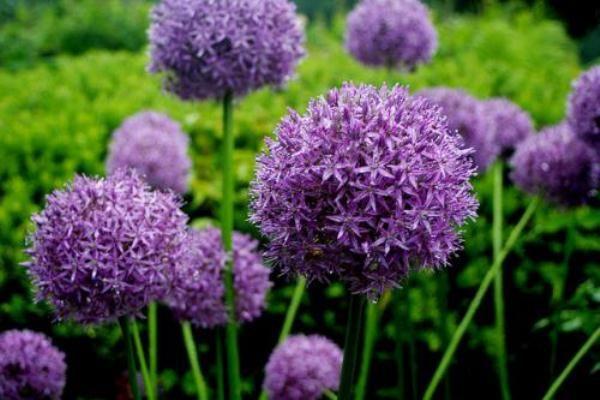
Growing
Ornamental onion is a plant that does not require special care and growing skills. Therefore, even a novice florist or gardener can cope with a decorative culture.
Allium is resistant to frost and is distinguished by its vitality, but there are some rules without which a flower will grow frail and ugly.
Site selection and preparation
A well-lit place is chosen for planting flowers. The plant loves sunlight, the more it is, the better it develops.
How to choose a site
Allium does not tolerate excess moisture, so lowlands are not suitable for planting. Shady corners of the garden are also not suitable for its growth.
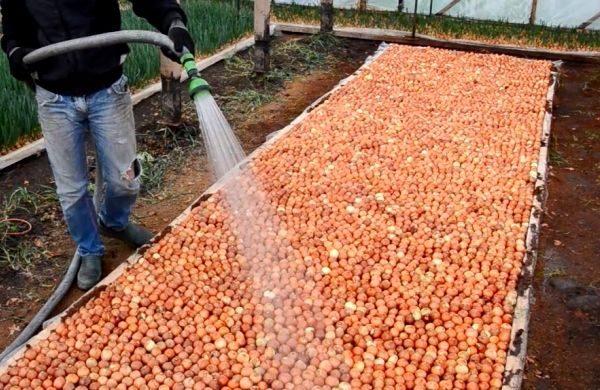
Ground requirements
Although the ornamental culture is not demanding to care for, it loves loose and fertile soils. Soil with a high acid content is mixed with lime before planting flowers.
Best neighbors
When Allium fades, its decorative properties are lost. Therefore, the best neighbors for this plant will be crops with beautiful decorative foliage, covering the yellowing and drying leaves of flowers.
Peonies, roses or irises will also be good neighbors for Allium.
How to plant from seed
After Allium blooms, seeds are formed, which are collected and planted in open ground. The timing of planting flowers in this way can be early spring or autumn. Most varieties of crops emerge in the spring. Young shoots must be stopped.
Important! Some varieties of crops give their first shoots after a few years.
Vegetative propagation
There are several ways of vegetative propagation of Allium.
Daughter bulbs
Children are formed on the bulbs of adult plants. They are carefully separated from the mother plant and planted. Up to 3 small bulbs are formed on the bulb of an adult flower.
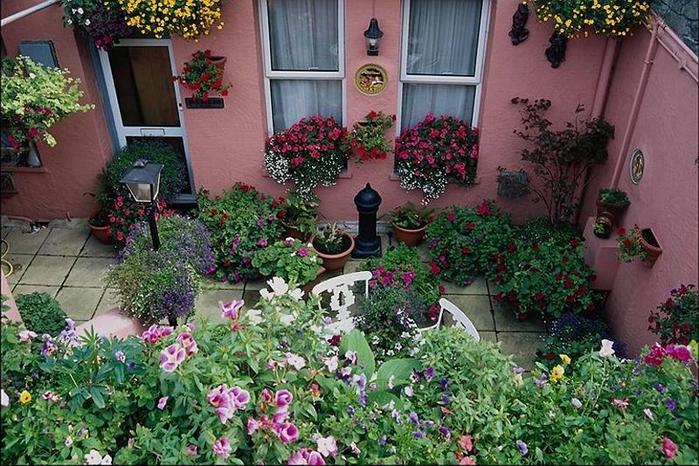
Bulb
Gardeners and flower growers with great experience propagate the plant with bulbs. After the culture has finished flowering, its head is carefully trimmed and treated with a special solution that stimulates growth. Then the heads are planted in the ground. This method allows you to get healthy flowers that retain all the decorative qualities.
Planting bulbs
The autumn season is most suitable for planting bulbs in open ground. Bulbs are carefully examined, planting material with traces of mold or rot is disinfected in a manganese solution. If most of the bulb is damaged, discard it.
Planting holes are dug in advance. Each hole does not exceed 10 cm deep. Bulbs are placed in the holes, covered with earth and thoroughly watered.
The distance between flowers depends on their size. The taller and larger the plant, the more space is left between plantings.
Care
Crop care depends on the climatic conditions of the region where it grows.
Watering
Ornamental onions do not tolerate waterlogged soil. If the plant is constantly flooded, it will lead to its death.
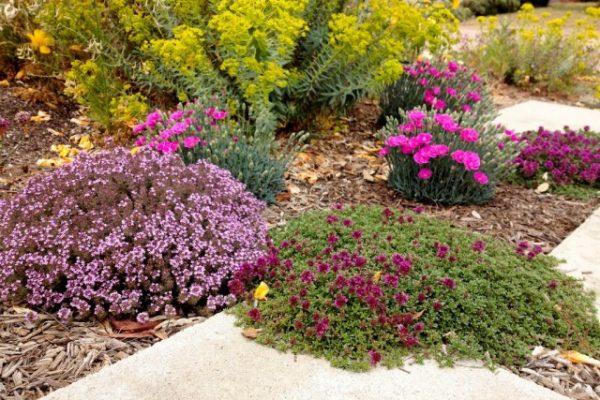
In drought and heat, the soil should not dry out, otherwise the culture will stop growing and lose its decorative properties.Important! For the growth and development of Allium, it is necessary to find the right balance of soil moisture.
Top dressing
In early spring, ornamental onions are fed with fertilizers containing nitrogen and potassium. Such procedures are carried out to give a more decorative appearance to the plant.
Diseases and pests
In the process of growing ornamental crops, gardeners are faced with various pests and diseases that slow down the development of plants or lead to their death.
Cervical rot
Allium bulbs can be affected by cervical rot during storage violations. For prophylaxis, the seed is dug up and heated at a temperature of 48 degrees from 10 to 12 hours.
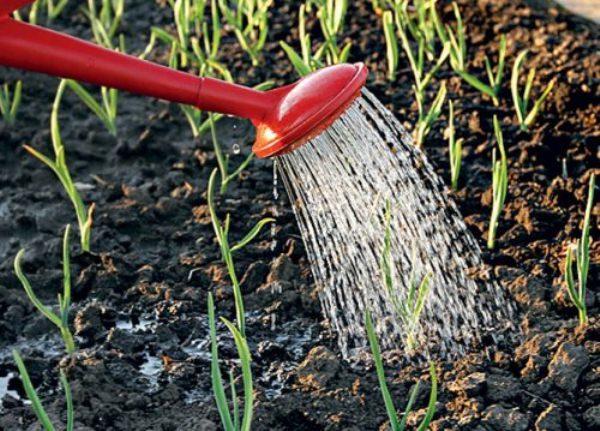
Downy mildew
Downy mildew is a danger to the plant. To prevent the development of the disease, the bulbs are warmed up at a temperature of 40 degrees before planting.
Tobacco thrips
The pest sucks out all the juices from the plant, which leads, if not to the death of the flower, then to a strong weakening and loss of decorative qualities. To remove them, preparations of the insecticide group are used.
Onion fly
To avoid infestation of flowers with an onion fly, you can use the early planting of bulbs in open ground. But if the infection could not be avoided, then the plant is treated with special preparations or saline.

Loosening and weeding
For proper growth and development, flower beds with Allium are weeded and loosened. Before the winter cold and spring they are mulched.
Important! The yellowed and withered leaves help the bulb accumulate nutrients necessary for wintering and growth for the next year. Therefore, try to avoid breaking off dried leaves from Allium..
Collection and storage of bulbs
In regions with harsh, cold winters, ornamental onion bulbs should be dug up and sent to a warm place for the winter. For this, a peat mixture or moistened sand is poured into the container. Bulbs are laid in it, and they are sent for the winter at temperatures from + 15 to + 18 degrees.
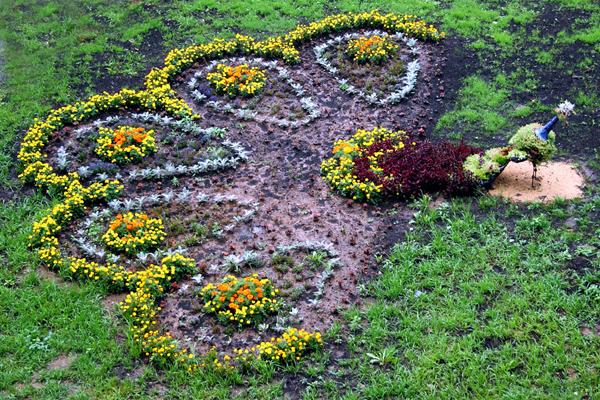
How to choose a variety
When choosing a variety of decorative onions, it is necessary to take into account its decorative properties and flowering time. Professional florists select plant varieties in such a way that beautiful flowers adorn their homesteads from early spring to late autumn.
Application in landscape design
The unusual appearance and variety of shades of Allium determines its decorative purpose in landscape design.
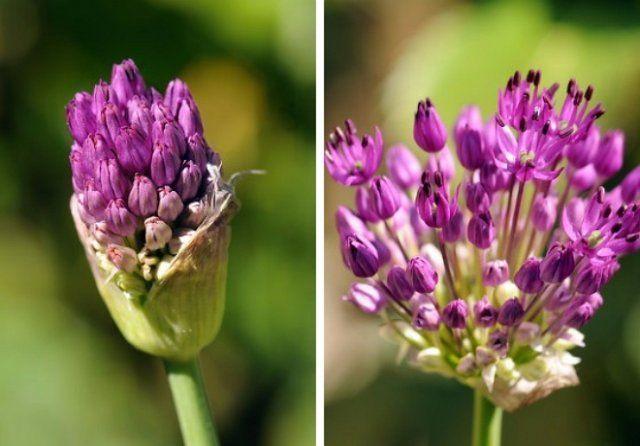
Flower beds
The culture is great for planting in flower beds and flower beds. For this, the sequence of flowering of different varieties of Allium and the height of the plants are selected.
In the garden
On large backyards and gardens, decorative bows are used to decorate alpine landscapes of rocky gardens
Reviews
Lilia Sergeevna, Yegoryevsk
How and when the allium was planted on the site, no one remembers. It just grows and blooms in our flower bed. Sometimes we water it.
We don’t dig it up for the winter and don’t even cover it. A beautiful and unpretentious flower. I recommend it to all gardeners and summer residents.
Irina, Leningrad region
Finally this year the blue allium bloomed, it's very beautiful. At first they tried to plant seeds, but it didn't work. We bought the bulbs, and now we are enjoying the beautiful views of the flower.
Evgeny, Moscow region
This year a gladiator bloomed for the first time. Impressions are just a lot. All the neighbors ran to me and asked where I got such a handsome man from. Large flowers and bold, broad foliage.
